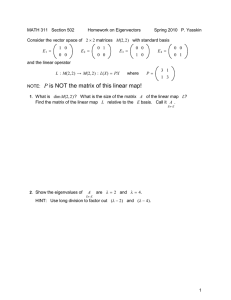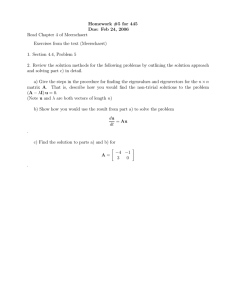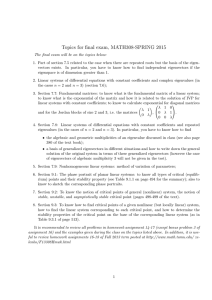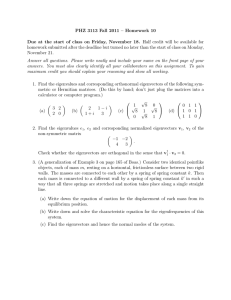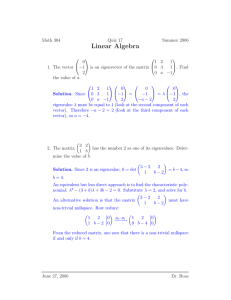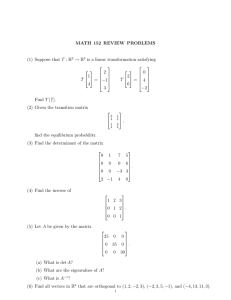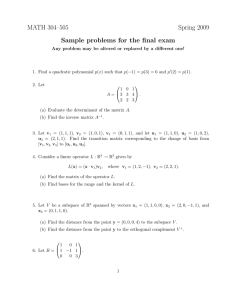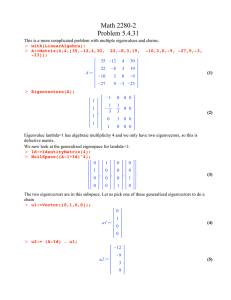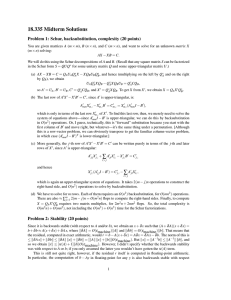Math 2280-2 §5.4 Multiple Eigenvalue Solutions Example 5.4.6
advertisement
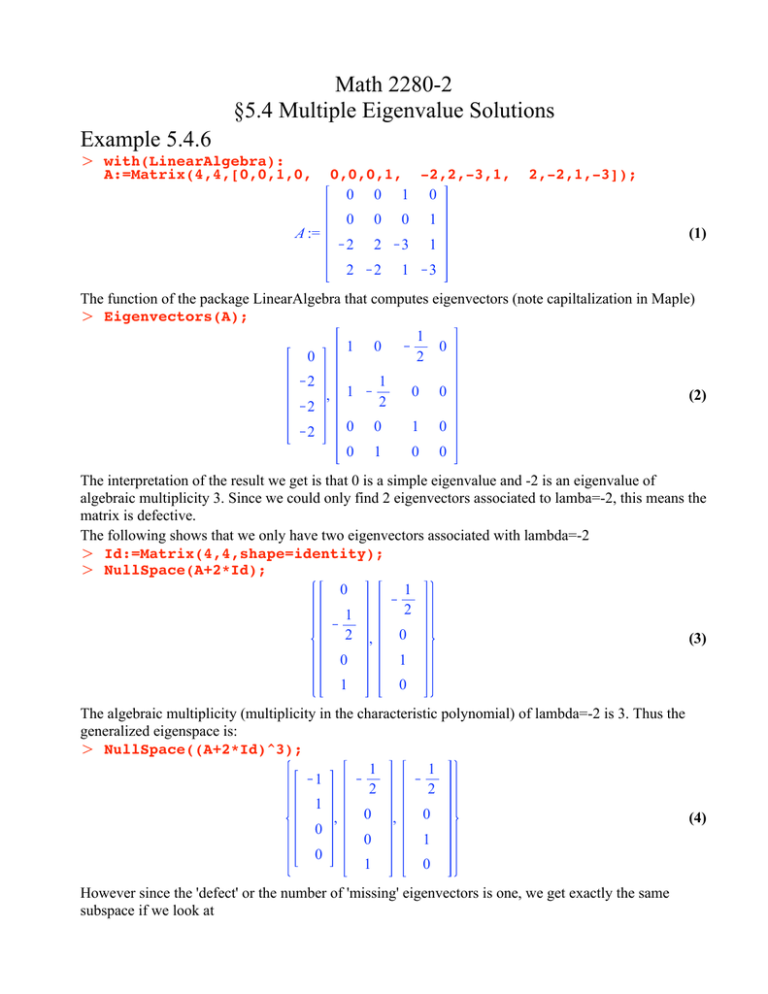
Math 2280-2 §5.4 Multiple Eigenvalue Solutions Example 5.4.6 O with(LinearAlgebra): A:=Matrix(4,4,[0,0,1,0, 0,0,0,1, -2,2,-3,1, 0 0 1 0 0 A := K2 0 0 1 2 K3 1 2 K2 2,-2,1,-3]); (1) 1 K3 The function of the package LinearAlgebra that computes eigenvectors (note capiltalization in Maple) O Eigenvectors(A); 1 1 0 K 0 0 2 K2 K2 K2 , 1 2 1 K 0 0 0 0 1 0 0 1 0 0 (2) The interpretation of the result we get is that 0 is a simple eigenvalue and -2 is an eigenvalue of algebraic multiplicity 3. Since we could only find 2 eigenvectors associated to lamba=-2, this means the matrix is defective. The following shows that we only have two eigenvectors associated with lambda=-2 O Id:=Matrix(4,4,shape=identity); O NullSpace(A+2*Id); 0 1 K 2 1 K 2 , 0 (3) 0 1 1 0 The algebraic multiplicity (multiplicity in the characteristic polynomial) of lambda=-2 is 3. Thus the generalized eigenspace is: O NullSpace((A+2*Id)^3); 1 1 K1 K K 2 2 1 0 , 0 , (4) 0 0 1 0 1 0 However since the 'defect' or the number of 'missing' eigenvectors is one, we get exactly the same subspace if we look at O NullSpace((A+2*Id)^2); 1 2 K1 1 0 1 2 K 0 , 0 K , 0 0 1 1 0 (5) This is because the defect tells you the size of the longest chain you can have. In this case chains no longer than 2 are already captured by NullSpace((A+2*Id)^2). We take a vector in the generalized eigenspace for lambda=-2 O v:=Vector([0,0,1,-1]); 0 v := 0 1 (6) K1 We see we obtain a linear combination of the eigenvectors. O u:=(A+2*Id).v; 1 u := K1 K2 2 Thus (A+2*Id)*u = 0, and we have a chain since (A+2*Id)*v = u. (7)
